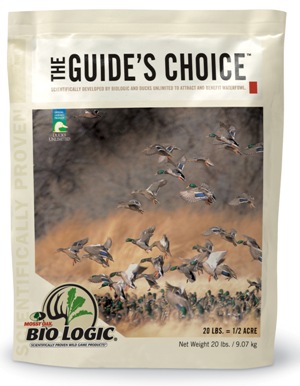According to Mossy Oak Biologic’s Bobby Cole, now is a perfect time to start thinking about how you’re going to attract, keep and get ducks to return to your property year after year.
 “What we do in the months of June and July is try to shut the water off our fields and dry them out for planting,” noted Cole. “Once we get the fields ready, we put out a product called Guide’s Choice. In the more northern states this blend can be planted around the first part of June, but here in Mississippi and other southern states, July 4 seems to be about right. This product grows so fast and produces so much seed. Thinking ahead to November and December, you want lots of feed for your ducks. You want traveling waterfowl to have a good experience on your property. If they find lots of feed and you manage your hunting pressure, they will return every year, and that’s really the goal.
“What we do in the months of June and July is try to shut the water off our fields and dry them out for planting,” noted Cole. “Once we get the fields ready, we put out a product called Guide’s Choice. In the more northern states this blend can be planted around the first part of June, but here in Mississippi and other southern states, July 4 seems to be about right. This product grows so fast and produces so much seed. Thinking ahead to November and December, you want lots of feed for your ducks. You want traveling waterfowl to have a good experience on your property. If they find lots of feed and you manage your hunting pressure, they will return every year, and that’s really the goal.
“We also have another product that works really well for disguising duck blinds. It’s called Blind Spot, and Blind Spot will help you conceal your duck blind by providing natural concealing foliage. It grows quickly, is drought tolerant and shoots up 5-7 feet tall. We also have a product that we grow in strips called WhistleBack. This product grows tall and bushy and produces a lot of seed. The idea is just to get after it and plant as much product as you can that will produce seed so that ducks have lots to eat in November, December and January.
“Lastly, it’s a good idea to plant a lot of mast trees. Plant those that love to have their feet wet and in 10 to 15 years you will have trees dropping acorns and providing additional feed for waterfowl. I highly recommend that you visit www.plantbiologic.com, www.nativnurseries.com and www.farmingforwildlife.com for additional information. It’s also a great idea to subscribe to Gamekeepers Magazine. This publication is all about land management and we pour loads of great tips and tactics into every issue.”




























